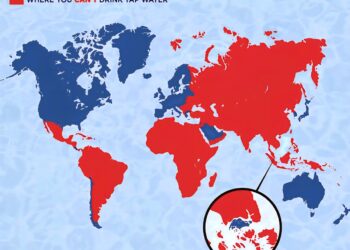Select Language:
Countries That Are the Most Culturally Similar to Each Other in 2025
Australia and New Zealand: A Shared Down Under Identity

Australia and New Zealand stand out as neighbors with remarkably similar cultures. Both nations share a colonial history rooted in Britain, leading to comparable legal systems, governmental structures, and cultural practices. Their shared love for outdoor adventures, sports like rugby and cricket, and a laid-back lifestyle highlight their close cultural ties. Despite some local distinctions, the two countries often feel like two sides of the same coin.
India and Nepal: Spiritual and Cultural Bonds
India and Nepal are deeply intertwined through religion, tradition, and history. Both countries predominantly practice Hinduism and Buddhism, shaping their festivals, rituals, and daily life. They share linguistic ties, with many languages rooted in Sanskrit, and similar culinary traditions. Their longstanding historical connections foster shared cultural values and mutual influence, making them culturally close in South Asia.
United States and Canada: North American Cousins

The United States and Canada are neighbors with significant cultural overlaps. Both countries boast multicultural societies and a shared language, English, along with influences from indigenous peoples and European settlers. Popular culture, including music, movies, and sporting events, seamlessly crosses borders. While national identities differ, their social norms and lifestyles often mirror each other.
Germany and Austria: European Cultural Twins
Germany and Austria are historically, linguistically, and culturally linked. The German language is common to both, and their artistic, philosophical, and musical heritages are intertwined. Traditional festivals like Oktoberfest (Austria and Germany) and similar culinary delights strengthen their cultural bond. They often share historical experiences that shape their national identities.
China and Taiwan: A Shared Heritage with Divergent Paths

Despite political differences, China and Taiwan share a common cultural heritage. Mandarin as a language, Confucian values, traditional festivals, and cuisine link them deeply. Their arts, literature, and family-oriented perspectives exhibit striking similarities, reflecting their common roots, even as modern political realities diverge.
Netherlands and Belgium: European Neighbors with Similar Traditions
The Netherlands and Belgium share borders, languages, and cultural practices. Both countries have a rich medieval history, renowned art scenes, and similar culinary traditions like waffles and chocolates. Their shared appreciation for cycling, liberal social policies, and linguistic affinities (Dutch and Flemish variants) make them closely aligned culturally.
United Kingdom and Ireland: Islands of Tradition

England, Scotland, Wales, and Ireland boast centuries of intertwined history. Shared language roots, similar folklore, music, and sporting traditions—including rugby and Gaelic games—create a cultural kinship. Despite national differences and historical conflicts, their cultural landscapes remain remarkably similar.
Japan and South Korea: East Asian Cultural Neighbors

Japan and South Korea share many cultural elements, stemming from ancient Chinese influences. Both nations value education, innovation, and have rich traditions in cuisine, fashion, and pop culture—the global spread of anime and K-pop exemplifies their shared influence. Their societal values and work ethics also align closely.
Spain and Portugal: Iberian Peninsula Twins

Spain and Portugal share the Iberian Peninsula, with intertwined histories and similar languages derived from Latin. They celebrate numerous festivals, like Spain’s Feria and Portugal’s Festa, with lively music, dance, and traditional cuisine. Their architectural styles and art also reflect shared heritage.
Sweden and Norway: Scandinavian Siblings

The Scandinavian countries of Sweden and Norway have deep cultural ties. Both emphasize outdoor life, environmental sustainability, and social welfare. Their languages are mutually intelligible, and they share historical narratives, folklore, and similar traditions in music and festivals, reinforcing their cultural closeness.
Russia and Belarus: Slavic Cultural Kinship

Russia and Belarus are both Slavic nations with shared linguistic roots, Orthodox Christian traditions, and similar folk customs. Their histories are deeply connected through imperial and Soviet periods, fostering long-standing cultural similarities in language, religion, and societal values.
South American Pairings: Argentina & Uruguay and Brazil & Portugal
Argentina and Uruguay share language, cuisine, and dance traditions like tango, creating a profound cultural connection. Similarly, Brazil and Portugal are linked through language and colonial history, with Brazil being the largest Portuguese-speaking country, sharing many cultural traits like music styles, festivals, and culinary traditions.
Middle Eastern Cultural Clusters
Greece and Cyprus: Both share ancient history, Orthodox Christianity, and similar cuisines and festivals like Easter. Their landscapes and social customs reflect their shared Mediterranean identity.
Bahrain and Qatar: These Gulf countries share Islamic traditions, Arabic language, and similar social customs, shaped by their common history and regional proximity.
Turkey and Northern Cyprus: Despite political distinctions, they share language, religion, and numerous cultural practices rooted in Ottoman history.
Sub-Saharan Africa: Shared Heritage and Traditions
Kenya and Tanzania: Both share Swahili language, rich tribal traditions, and similar music and dance styles, influenced by their geographical proximity and shared history.
South Africa and Namibia: These neighboring countries have diverse but overlapping cultures, with shared colonial influences, language (English and Afrikaans), and similar traditions.
Caribbean and Central American Harmony
Costa Rica and Panama: Their shared Latin American roots, Spanish language, and similar cultural practices in cuisine and festivals like Día de los Muertos create a strong cultural bond.
Cuba and Puerto Rico: Both are Spanish-speaking islands with shared history, music, dance (salsa), and rich cultural traditions rooted in indigenous and colonial influences.
Eastern European and Balkan Connections
Serbia and Montenegro: These countries share Slavic roots, Orthodox Christian traditions, and similar cultural practices.
North Macedonia and Serbia: Rich in history and language similarities, their cultural expressions reflect shared Balkan traditions.
African and Middle Eastern Nations
Morocco and Tunisia: Both countries have Berber and Arab influences, sharing architectural styles, cuisine, and traditional music.
Egypt and Libya: Close cultural ties arise from shared history, language, and Islamic traditions.
General observations
While these countries may have distinct political realities and modern developments, their cultural foundations—language, religion, customs, and traditions—still strongly connect them. These similarities foster cross-border cultural exchange, tourism, and shared heritage projects that continue to enrich global diversity in 2025.
Note: “Culturally similar” refers to nations whose traditions, language, religion, and way of life strongly resemble each other, despite political or geographic differences.




